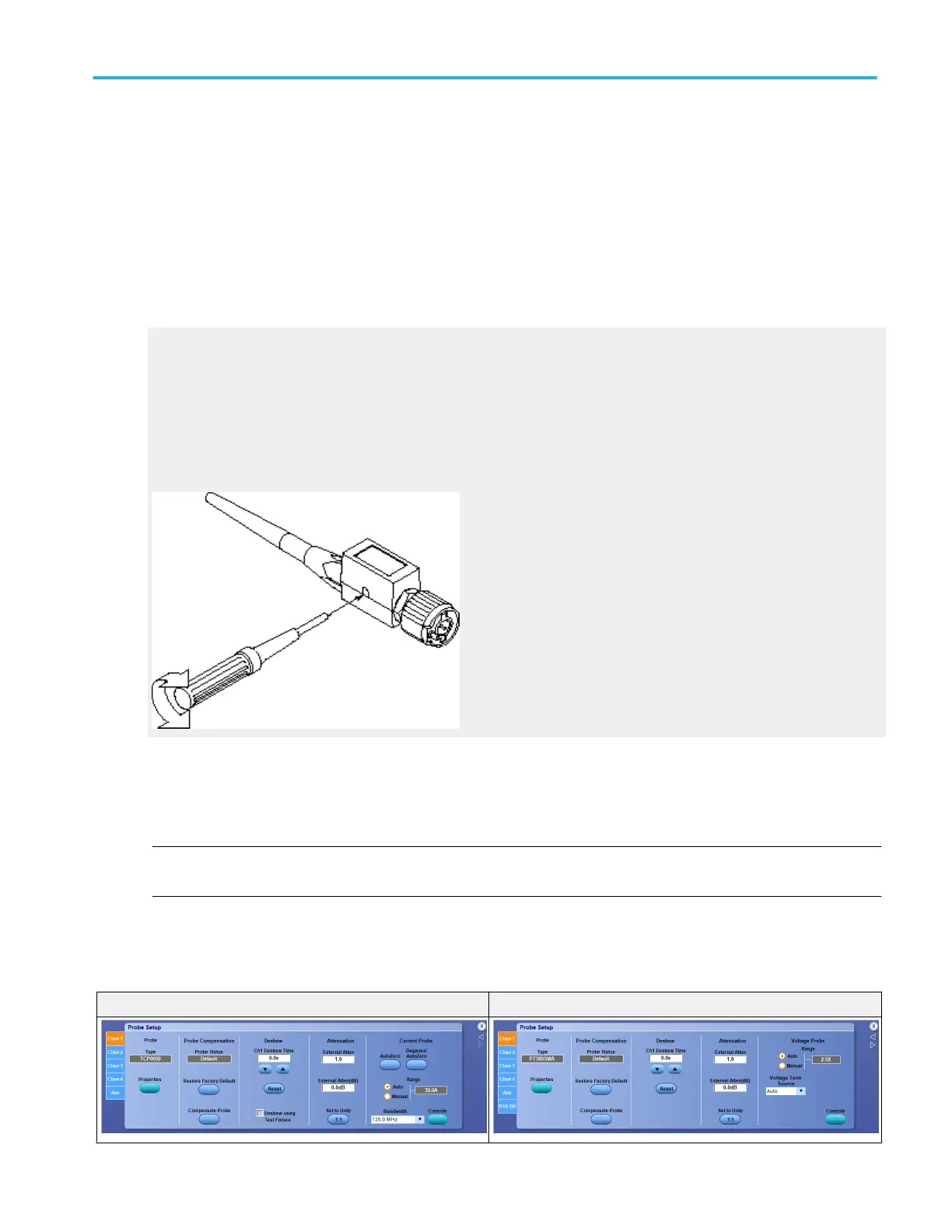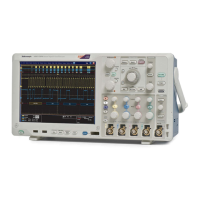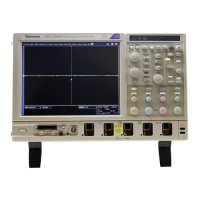Tips for Reducing Measurement Noise
■
Use the least amount of attenuation. Probe noise is a function of probe attenuation, for example, using a 25X probe, versus
a 5X probe, results in significantly greater noise.
■
Select the lowest attenuation that displays the input voltage swing of your signal; then use the vertical scale setting to adjust
the waveform display on screen, as needed.
■
Use a lower bandwidth probe to reduce noise.
■
Reduce the vertical bandwidth of your oscilloscope. In general, a bandwidth 3 to 5 times the fundamental frequency of the
waveform is a good compromise, allowing capture of harmonic content while minimizing noise.
What do you want to do next?
Learn more about the Probe Status indicator.
Learn more about the Probe Compensation controls.
Go to a step-by-step procedure to calibrate active probes.
Go to a step-by-step procedure to calibrate passive probes.
Learn more about the Vertical controls.
Probe Compensation Adjustment
Probe setup control window (Setup type)
From the Vertical menu, select Probe Controls, and then click the Setup button.
NOTE. You must attach an appropriate probe to the logic probe port or to the Ch1-Ch4 vertical input to activate this setup
window.
Overview
Use the Probe Setup control window to configure a probe that you connect to the vertical input.
Click for DPO7000C and MSO/DPO5000B instruments: Click for MSO/DPO70000C/DX/SX and DPO7000C instruments:
Vertical setups
DPO70000SX, MSO/DPO70000DX, MSO/DPO70000C, DPO7000C, and MSO/DPO5000B Series 499
